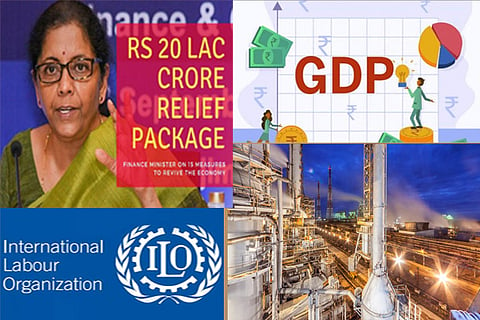

Chennai
And now, corporate India is compelled to pinch its purse even further as a new survey has suggested that 33 per cent of companies might consider doing away with salary hikes next year as well. The study by Deloitte Touche Tohmatsu India said average salaries had seen a meagre hike of just about 3.6 per cent in the fiscal that began this April, compared with 8.6 per cent a year ago. The forecast is yet another harbinger of anxiety to the working class that has been witnessing retrenchments and pay-cuts since the lockdown was imposed. What has also thrown a spanner in the works vis-a-vis economic recovery in India, is how wages in the manufacturing sector declined, by as much as 7% between April to June 2020. According to experts, manufacturing is one of the four sectors that have been hit hardest by COVID-19. The other sectors include wholesale and retail trade and repair; rental and business services; as well as hospitality and food services. Stakeholders believe growth in wages as seen in pre-COVID levels, is not foreseeable soon.
If one were to go by the International Labour Organisation’s (ILO) numbers, at least 41 lakh youth in India have been rendered jobless due to COVID-19. This development will have far-reaching consequences in India where a staggering 60 per cent of the GDP comes from consumption. But that phenomenon, which bears fruit during the festive months following Vinayaka Chathurthi, will be conspicuous by its absence owing to many reasons. For one, consumption can be set into motion if there is ample cash flow in the economy. During this season, a crucial time when the country’s economy is limping back to normalcy, a few thousand rupees more in disposable income in the hands of those needing it the most, might have been a silver lining and helped ease the burden imposed by COVID. But that’s a dead end as far as India is concerned. Not only are office-goers controlling their spending, and keeping even festival time expenditure in check, especially on items such as luxury goods, gifts, apparel and electronics, many are also unsure about job stability, and of course, setting aside a corpus in case of COVID emergency.
In May, the announcement by the Prime Minister to allocate a sum of Rs 20 lakh cr in phases as an economic measure to mitigate the impact of the pandemic might have offered some appeasement to the public. But now, as we near six months into the pandemic, a new normal has become the order of the day. Migrants are embarking by the thousands, on a reverse exodus of sorts, returning to the urban regions from villages, in the absence of jobs and money. The need of the hour is a practical targeted intervention led by the Centre, in collaboration with the states, to ensure vulnerable citizens are not flattened by the pandemic. The ILO has recommended a series of measures including youth-targeted wage subsidies and public employment programmes to help people tide over the crisis.
But it is also imperative that the Finance Ministry takes major industry heads in India into confidence, as half a year has been spent in this state of limbo. A clear plan of action about the recovery of the services industry, among other worst-hit sectors, will now have to be evolved in consultation with relevant stakeholders. The government cannot afford a stance of indifference, as it might only serve as a potent recipe for anarchy.
Visit news.dtnext.in to explore our interactive epaper!
Download the DT Next app for more exciting features!
Click here for iOS
Click here for Android